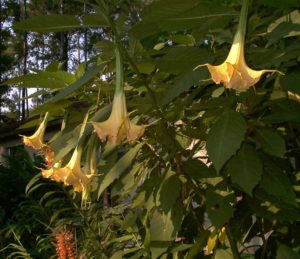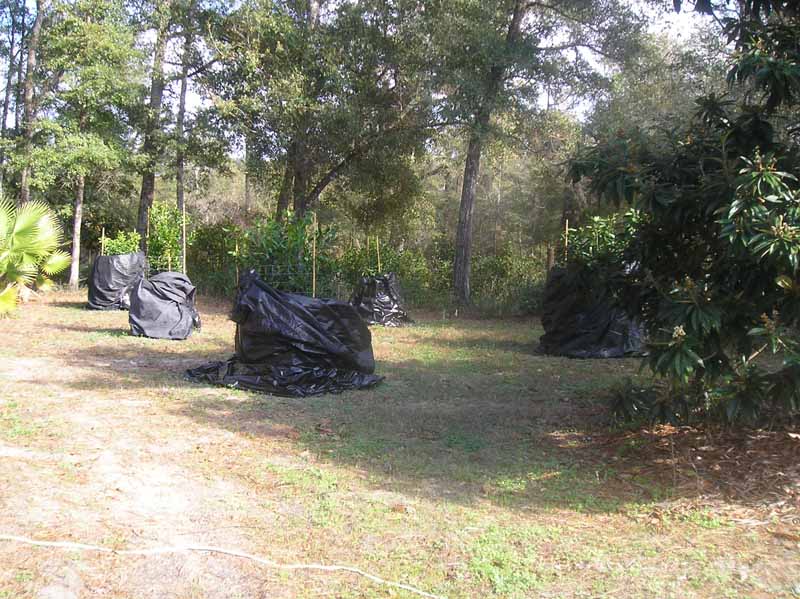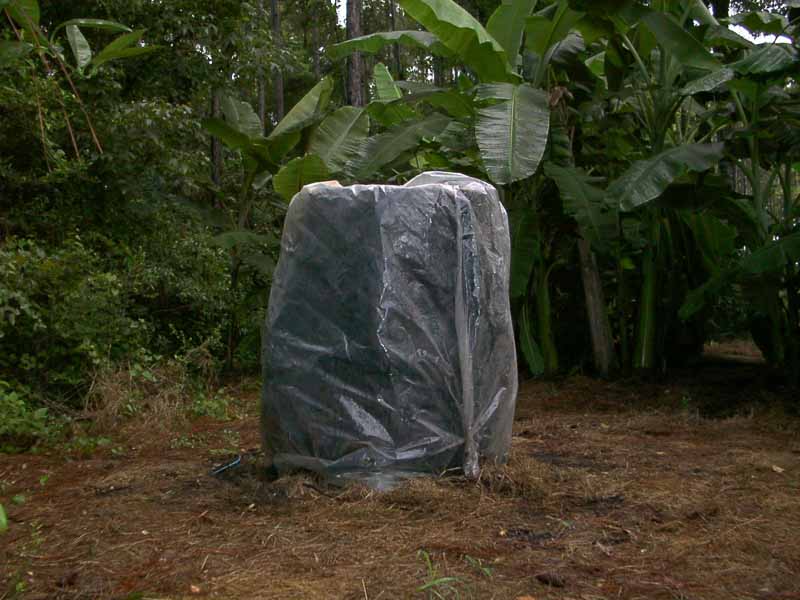[printfriendly]
Stretch the Range of What’s Possible – Frost Protection to Extend the Season.
I guess I’m like a lot of folks who love tropical plants. I do it for several reasons, their beautiful colorful flowers and delicious fruit brightens my garden and gives me a chance to escape to a tropical paradise in my own back yard. It also provides me with a challenge to grow a plant that most people need a plane ticket to see.

We’re lucky enough to be living in a region that allows us the chance to grow a wide range of these tropical beauties and thanks to a little innovation and elbow grease we can do a lot to stretch the range of what’s possible to grow in our region. Some of the tricks to getting away with having such beauties as Angel Trumpets (Brugmanisi a spp.) Papaya, and Key Limes grace our gardens lie in a few simple frost protection solutions.
The first step to successful zone denial is to know the range of temperatures that your tropicals can take. There are many border line perennials like mandevilla that are rated for zone 9 that can be successfully grown in our area. The trick to getting these through our winters is to protect them before they succumb to freezing temperatures. You need to cut them down before the first frost a few inches above the ground and mulch with a layer of pine straw. Pine straw is a good insulation against cold weather as well as providing a material that deters stem rot during warm spells through out the winter. Be sure to pull back this protect layer of mulch in the spring to allow the plant to push new growth .
 Another method of good frost protection is to wrap just the trunks of tender vines and trees like Bougainvillea and Coral Bean tree with a layer of insulation. The same products you use to protect your exposed water pipes works well for this job. Be sure to check under the covering from time to time to make sure there is no rot or insect build up.
Another method of good frost protection is to wrap just the trunks of tender vines and trees like Bougainvillea and Coral Bean tree with a layer of insulation. The same products you use to protect your exposed water pipes works well for this job. Be sure to check under the covering from time to time to make sure there is no rot or insect build up.
A common technique used by most people is to cover plants with a sheet or blanket in the event the temperatures dipping low for the night. This usually works if we get a light frost or freeze to 26 or 27F. But our area is known to have occasional hard freezes in the low 20’s and even into the teens. It’s on these rare occasions that plants need some extra help to make it through.

The secret to escaping these freezes requires just a few simple steps:
- -First make sure your plant is well watered. Dry plants are more susceptible to being killed in a freeze.
- -Get your frost protection blankets on in the afternoon if you can as this will allow you to build up some heat inside to help keep the plants warm during the freeze.
- -Use a two layer blanket system. First use an insulating layer against the plant. This can be an old sheet, blanket or even an old blue tarp. On top of that put a layer of plastic. It can be clear or black plastic. Be sure your covers are long enough to reach the ground and weigh them down something heavy so that your warm air doesn’t escape.
- -Be sure to uncover them the next morning before they over heat. If the freeze lasts for more than a day, just crack open the covers to let them breath during the warm part of the day.

